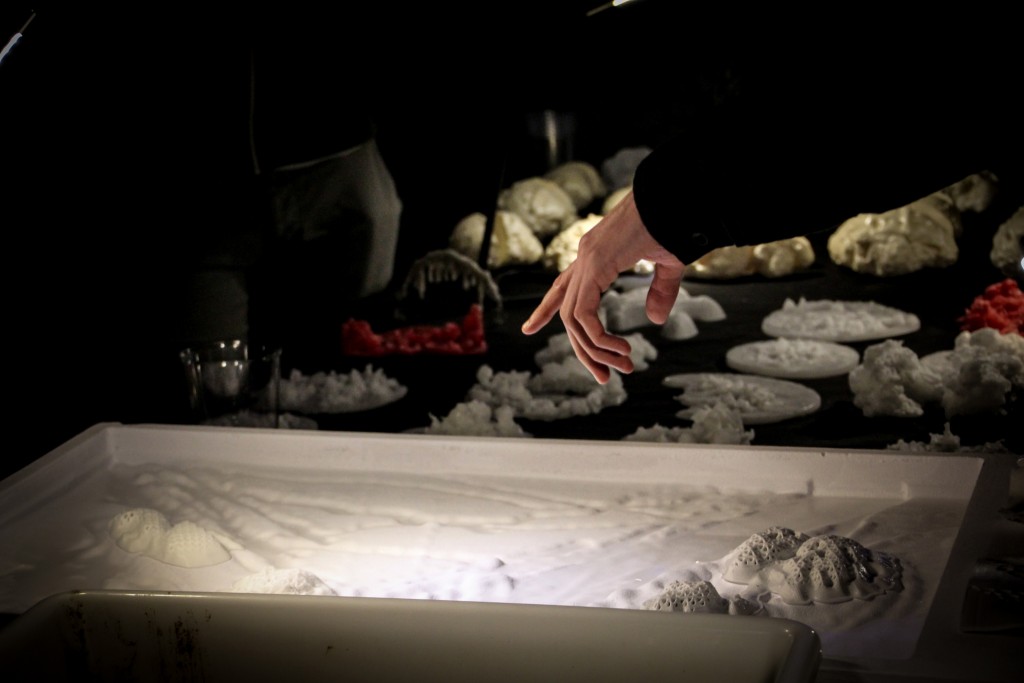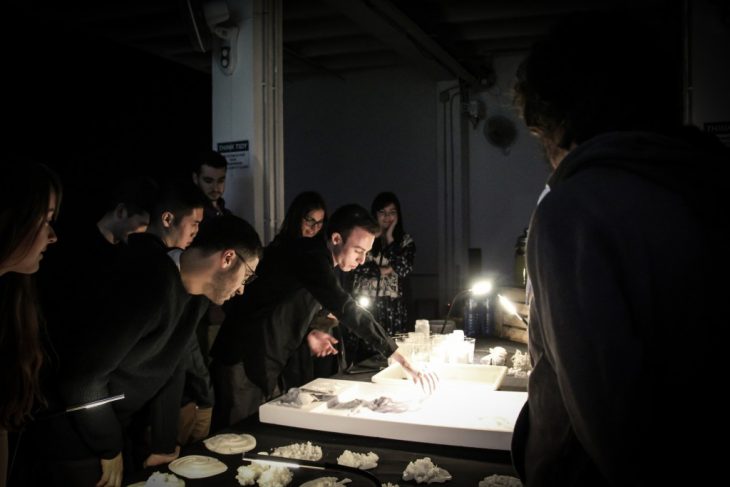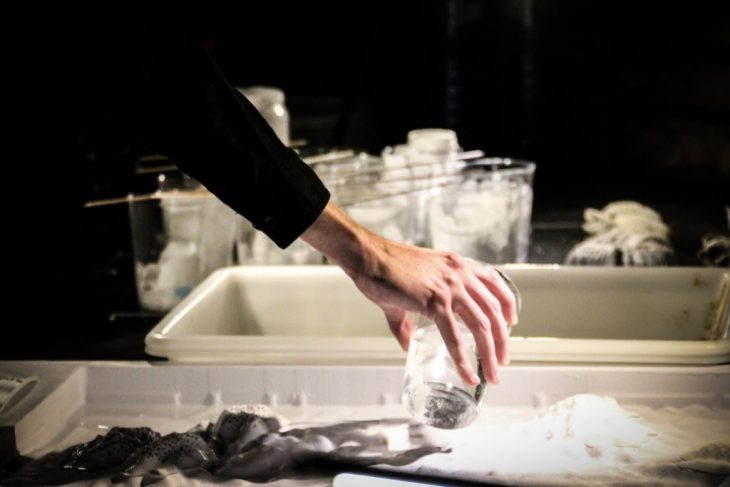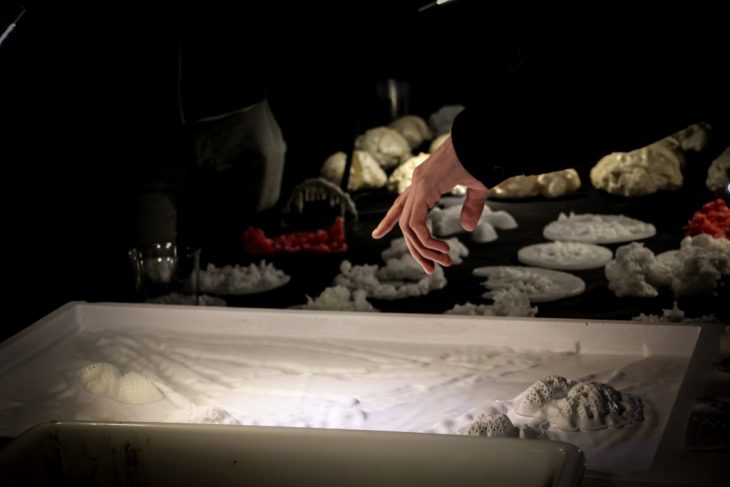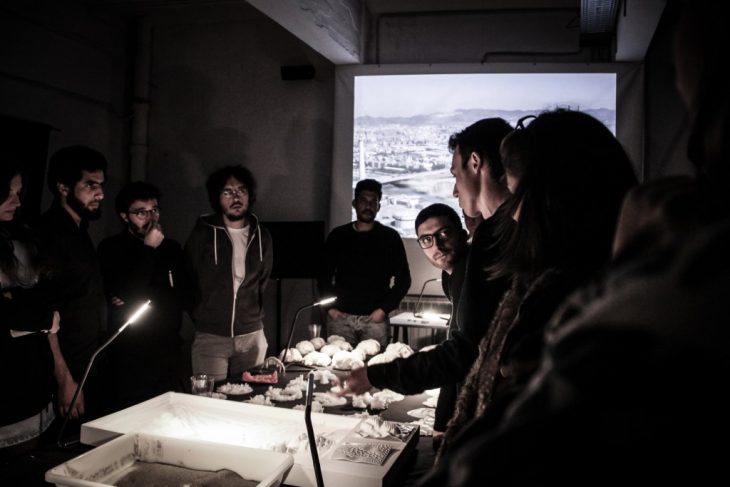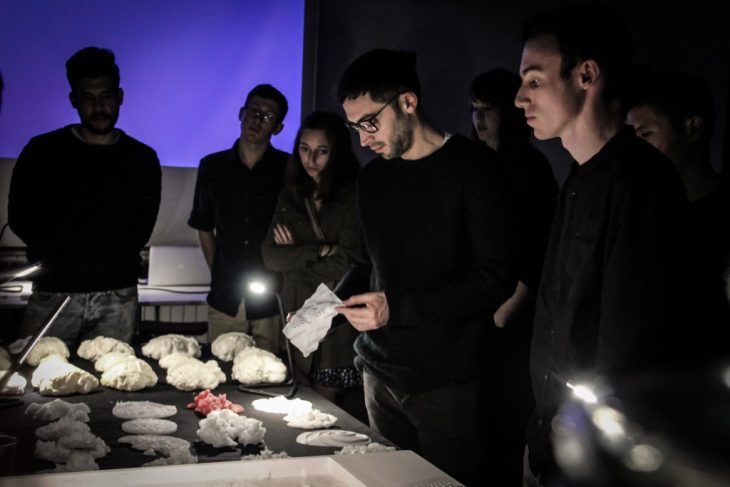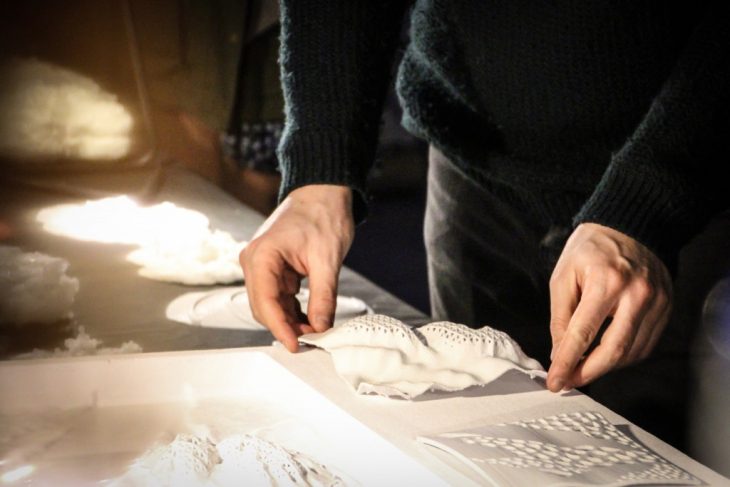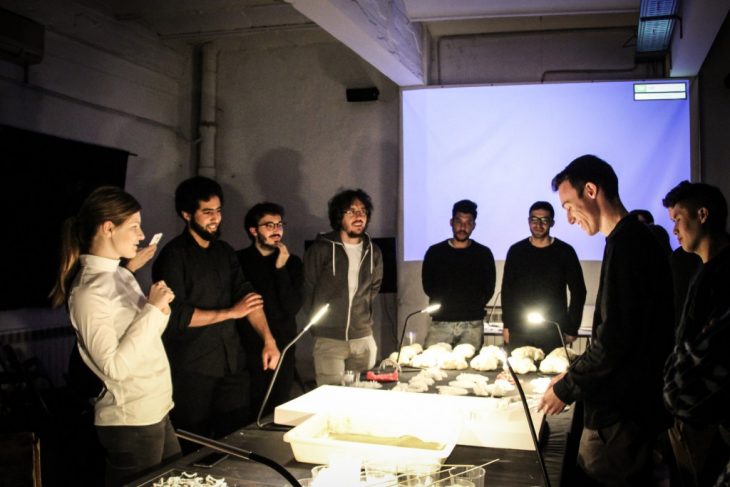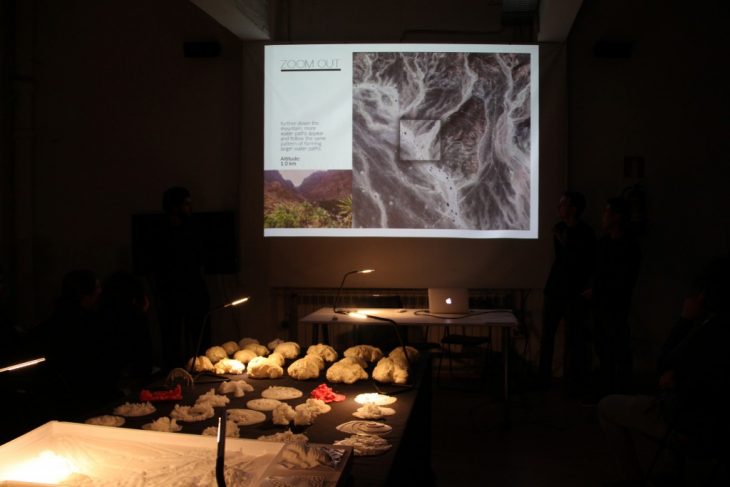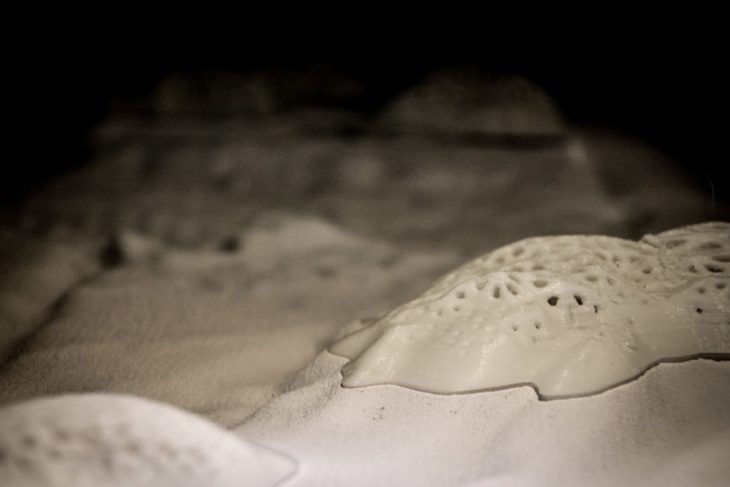Last Monday 19th of December the Institute for Advanced Architecture of Catalonia hosted the final presentations of the CIEE Global Architecture and Design Program.
Continuing the IAAC research agenda, and using Barcelona as an experimentation laboratory, the Future Cities Studio has explored the relationship between city and water, seeking innovative ways to improve this connection through speculative design and experimentation.
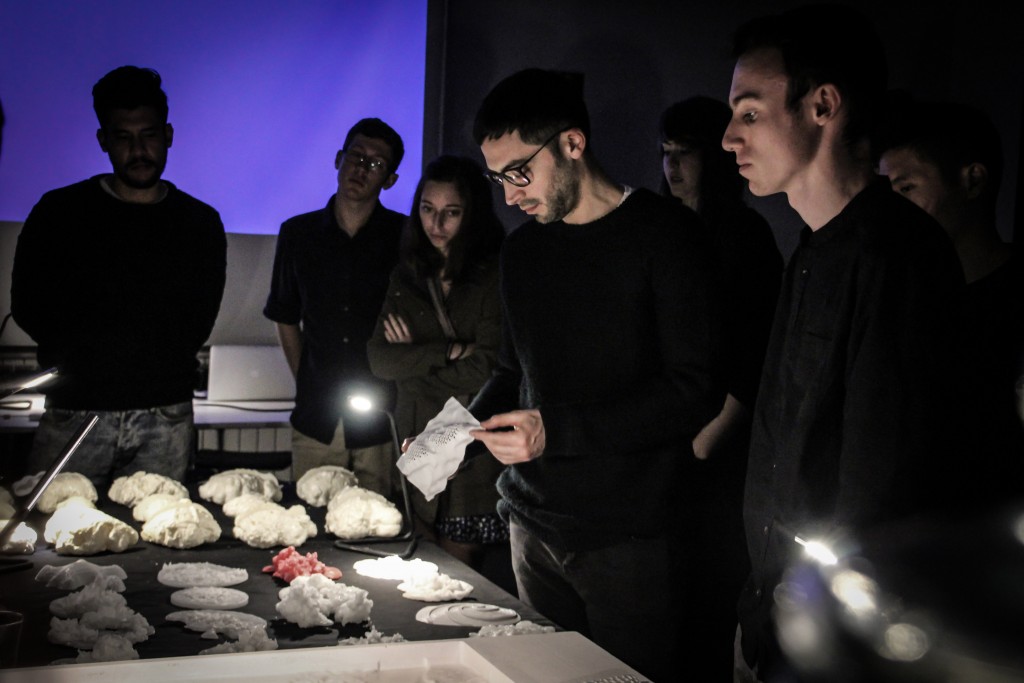
Challenged with the necessity for self-sufficient public space and infrastructure of future cities, the studio proposed a unique typology and technological intervention that can have profound impact not only on local surrounding, but can be applied on any context with similar issues. The chief directives has been the shrewd intersection between technology and environment, especially under the rubric of ecology and computational design.
Through intensive research and design, the Future Cities Studio has been based on advanced architecture design approach. Students explored various techniques to study urban phenomena linked to digital tools to find site specific context-related data. Later on, students applied these data in the formulation of parametric derived forms, which can be responsive to local conditions.
In reaching these goals, the studio deployed computational tools within realm of latest digital design, using Rhino and Grasshopper for parametric and topological 3D modeling, and for animation and stereoscopic rendering, thus presenting concepts in enhanced 3D visualizations. In parallel, students also focused on digital fabrication techniques using in-house 3D printers and CNC machines to produce small and large scale physical models or prototypes.
Designed specifically to meet the academic requirements of advanced architecture and design students, the Global Architecture & Design Program offer students the chance to further their major studies in some of the world’s global centers for design innovation.
With expert instruction from leading designers and innovators in the field, students can broaden their perspective through cultural exploration, advance their academic studies with globally relevant issues, and gain a professional edge by learning advanced design techniques and cutting-edge technologies.
